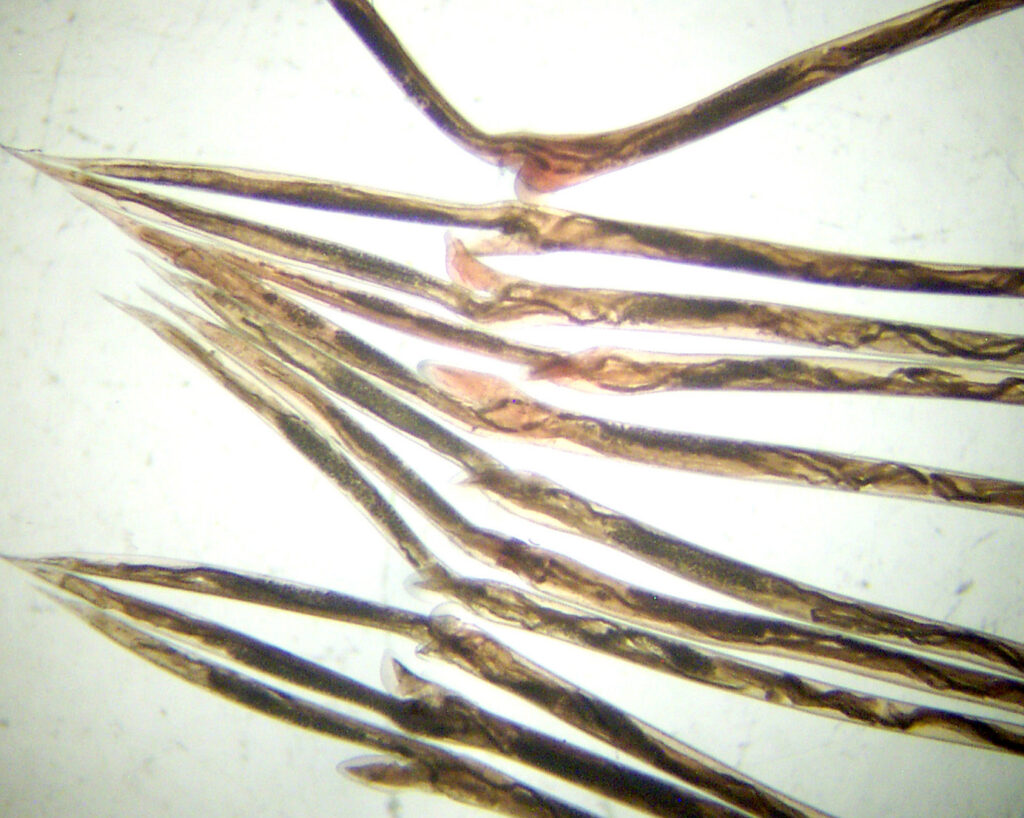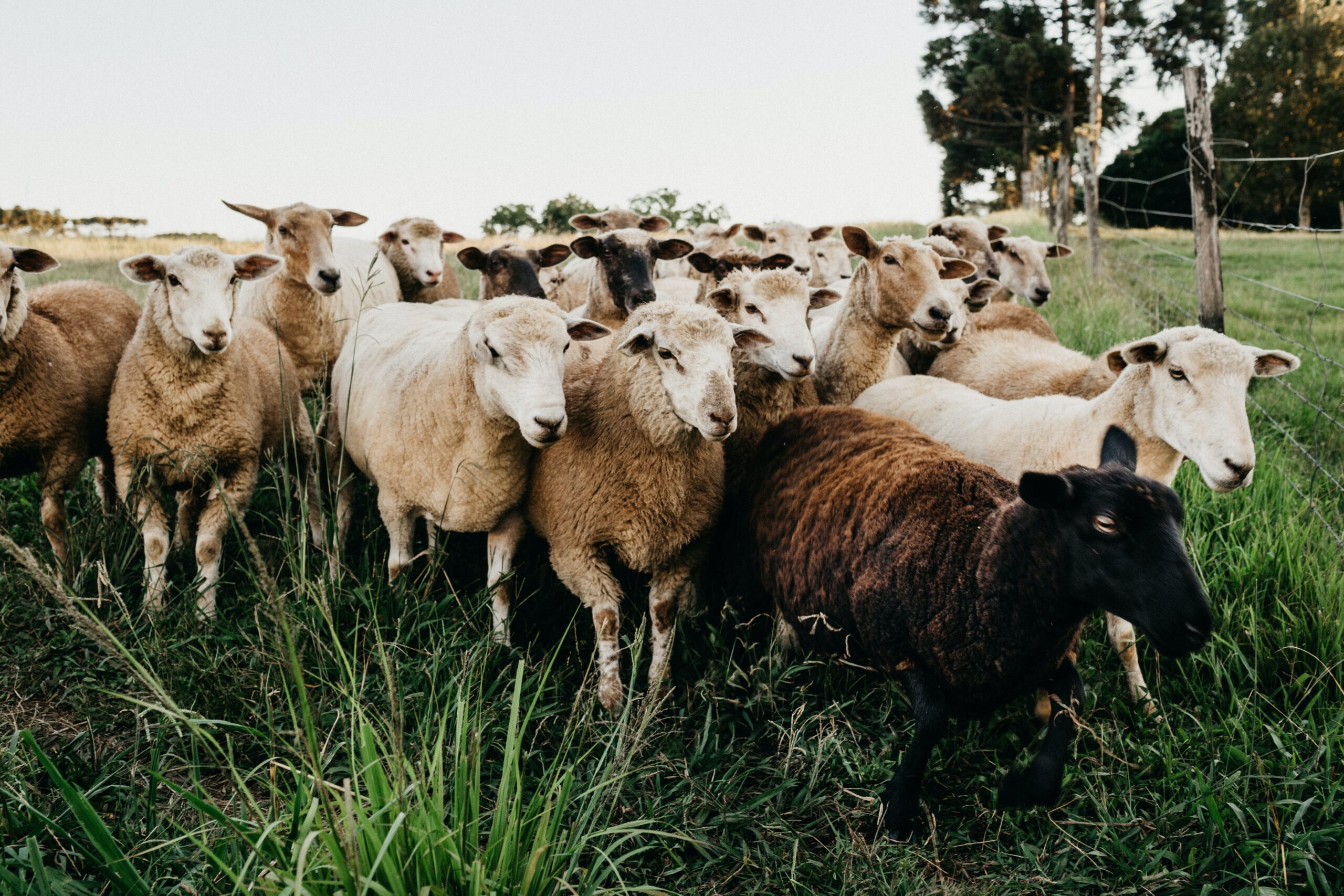In the world of goat production, one health concern looms larger than most: internal parasites, especially roundworms. Of these, the most notorious is the barber pole worm (Haemonchus contortus), aptly named for its red and white striped appearance, reminiscent of a traditional barber’s pole. This formidable parasite feeds on blood, leading to blood loss in infected goats. In severe cases, it can cause anemia, which can be detected through visible signs like paleness in mucus membranes, bottle jaw (swelling under the jaw), and other symptoms. Beyond these visible effects, barber pole worms wreak havoc on feed efficiency by damaging intestinal cells, interfering with the absorption of digested feed. In some instances, infected goats may succumb to the parasite before displaying diarrhea, resulting in significant losses in weight, growth, and milk production. Managing Barber Pole with producer friendly strategies for health and productivity is a must.
Understanding the Parasite-Host Relationship
It’s crucial to recognize that all goats harbor some level of barber pole worms. However, infection does not necessarily equate to disease. In fact, maintaining a completely worm-free herd may not be in the best interest of the goats. Exposure to small numbers of internal parasites helps stimulate the goat’s immune system, enabling it to develop natural resistance. Without this exposure, the goat’s immune system may not mount a defense swiftly enough when confronted with a substantial parasite challenge, potentially leading to dire consequences. Proper management seeks to control rather than eradicate internal parasites, recognizing the delicate balance required for a healthy herd.
The Life Cycle of Barber Pole Worms
To effectively control barber pole worms, one must understand their life cycle. The journey begins when goats ingest infective barber pole worm larvae while grazing. These larvae then make their way into the stomach or intestines, where they mature into adult worms, mate, and lay eggs. A single adult female barber pole worm has the capacity to lay over 5,000 eggs daily, which are subsequently expelled in feces onto the pasture. The development of larvae outside the host is highly dependent on climate, favoring warm and moist conditions while detesting cold or dry environments. Once favorable conditions are met, eggs hatch, and the larvae go through two non-infective stages before reaching the infective third stage. These infective larvae climb up forages, typically in the morning dew, usually ascending no more than 1 to 2 inches up the plants. When ingested by goats, this completes the cycle, taking about three weeks under typical conditions. However, the duration may vary depending on environmental factors.

Adaptive Strategies of Barber Pole Worms
Barber pole worms have evolved several adaptive strategies to ensure their survival. One such adaptation is arrested development, where larvae remain dormant in the abomasum (the true stomach of ruminants) following infection, only maturing into adults several months later. This delay helps the worm persist through harsh winters when eggs and larvae struggle to survive on pasture.
Another key adaptation is the periparturient rise, where female worms, triggered by hormonal changes in pregnant does, produce an abundance of eggs shed around the same time as kidding. This ensures that the next generation becomes infected, perpetuating the parasite cycle.
The following link is to list of informative archived webinars offered by the Maryland Small Ruminant page.
https://www.sheepandgoat.com/webinars
Strategies for Controlling Barber Pole Worms
Effective control of barber pole populations hinges on breaking the cycle at one or more points. Several management practices can help achieve this:
- Grazing Height: Avoid grazing goats on pastures with less than 3 inches of canopy. Larvae cannot climb higher than this, reducing the risk of ingestion.
- Browse Grazing: Incorporate browse plants into grazing systems. Parasite larvae cannot attach to browse, preventing ingestion by goats.
- Species Rotation: Rotate species on pastures, grazing cattle or horses behind goats. Since parasites are species-specific, these animals ingest goat parasites without harm.
- Feeding Practices: Do not feed goats on the ground. Use elevated feeders to reduce fecal contamination.
- Water and Mineral Sources: Ensure that water and mineral sources are not contaminated with feces.
- Pasture Rest: Allow pastures to rest for at least one year before reintroducing goats to reduce parasite survival.
- Annual Forages: Incorporate annual forages into pasture systems and till the ground between crops to disrupt larvae and eggs.
Selective Treatment: Implement selective treatment based on the FAMACHA system, which involves examining eyelid color to assess anemia and the need for deworming. Additionally, consider using Fecal Egg Counts (FEC).
Fecal Egg Counts (FEC): Fecal Egg Counts are a valuable tool in parasite management. By regularly testing fecal samples from your goats, you can determine the level of internal parasite infestation. Animals with high egg counts are treated, while those with lower counts may not require immediate treatment. This approach helps in selective deworming, reducing the risk of developing parasite resistance to chemical dewormers.
- Supplemental Feeding: Provide supplementary feed to improve goat health and nutrition, reducing their susceptibility to parasites.
- Smart Drenching: Administer dewormers accurately by knowing the goat’s weight, administering in the back of the mouth, and withholding feed before treatment for better efficacy.
- Supplemental Control Measures: Explore additional parasite control methods, such as tannin-rich forages, copper oxide wire particles, mixed species grazing, and supplemental feeding.
Effective management of internal parasites, particularly barber pole worms, is crucial for maintaining the health and productivity of goat herds. Understanding the parasite’s life cycle and adaptive strategies is the first step in implementing control measures. By employing a combination of strategies, goat producers can break the parasite cycle, reduce the need for chemical dewormers, and promote the well-being of their goats. Remember that controlling rather than eradicating internal parasites is the key to a healthy and resilient goat herd, and incorporating Fecal Egg Counts into your management practices is a powerful tool in this

